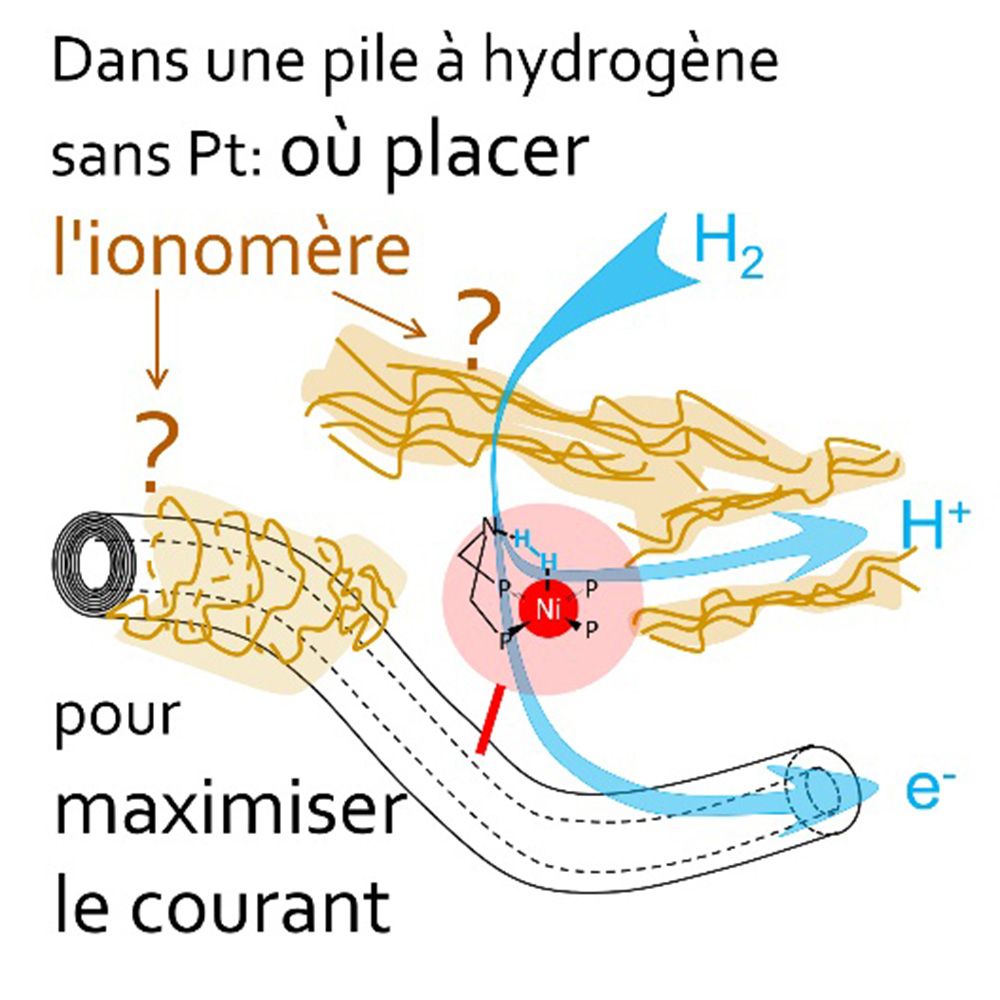LCBM & SyMMES
- Share
- Share on Facebook
- Share on X
- Share on LinkedIn

The ecological transition requires cheap and abundant electrocatalysts to achieve six key reactions: H2 evolution (HER), H2 oxidation (HOR), CO2 reduction (CO2RR), N2 reduction (NRR), O2 evolution (OER), and O2 reduction (ORR) reactions. HER, CORR, NRR, and OER take place in electrolyzers and photoelectrochemical cells to produce fuels and chemicals and O2 as a side product, whereas HOR and ORR are used in H2 fuels cells to produce electricity. Proton-exchange membrane technologies are promising, but they heavily rely on platinum-group metal catalysts. Molecular-engineered systems based on bio-inspired catalysts immobilized on carbon nanotubes hold promise for the development of platinum-free devices, but formulation of such alternative catalysts is still in its infancy. We show here that the functionalization of the carbon nanotubes directs the structuration of Nafion ionomer in the catalytic layer, which affects the mass-transport properties and therefore the performance of the device.
PI: Pascale Chenevier, Vincent Artero
Nathan Coutard,a Bertrand Reuillard,a Tran Ngoc Huan,a Fabrice Valentino,a Reuben T. Jane,a Solène Gentil,a,b Eugen S. Andreiadis,a Alan Le Goff,b Tristan Asset,c Frédéric Maillard,c Bruno Jousselme,d Adina Morozan,a Sandrine Lyonnard,e Vincent Artero*a and Pascale Chenevier*e
Chem Catalysis 1, 1-18, doi : 10.1016/j.checat.2021.01.001
Chem Catalysis, 2021
- Share
- Share on Facebook
- Share on X
- Share on LinkedIn